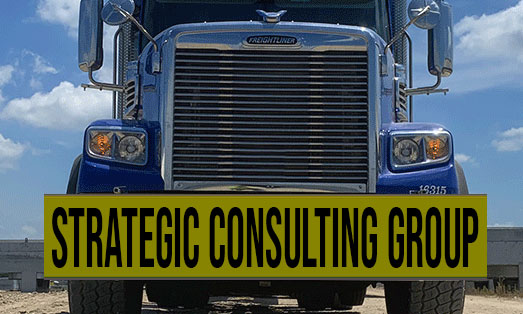Risk Mitigation: Identifying and addressing potential risks. explained
Managing Large Projects, Risk Mitigation: Identifying and addressing potential risks., and more
Turning Risk Management into a Fun Adventure!
Let’s face it, sometimes risks can feel like a downer. But what if we approached them with a little more excitement? Think of risk management as a game, a chance to be a problem solver and a hero of your own story!
There are tons of cool ways to manage risk, and we’re going to explore some of the most fun and exciting options:
Option 1: The Risk-Free Escape!
Sometimes, the best way to deal with a risk is to simply avoid it. Imagine you’re building a sandcastle on the beach, and you see big waves rolling in. Instead of letting your sandcastle get washed away, you decide to build it further up the beach, where it’s safe from the waves! Now that’s a smart move!
Option 2: The Risk Mitigation Adventure!
Risk mitigation is like a treasure hunt. You’re searching for potential problems, and then you create a plan to overcome them. Here’s how it works:
-
Step 1: Spotting the Hidden Dangers!
- Imagine you’re launching a new product. You’re like a detective, searching for any possible hiccups. Maybe the product is too expensive, or maybe people won’t understand how to use it.
-
Step 2: The Problem-Solving Crew!
- Now, it’s time to brainstorm solutions. How can you make the product more affordable? Can you create a fun video that shows people how to use it?
-
Step 3: The Action Plan!
- Your solutions become your action plan. You’re like a superhero, equipped to handle any problem that might come your way!
So, whether you’re building a sandcastle, launching a new product, or planning your next trip, remember that risk management is your secret weapon to make sure your adventure is a success!
Navigating the Unknown: Mastering Risk Mitigation
TL;DR Risk mitigation is like having a plan to deal with unexpected problems in life or work. It helps us prevent problems or minimize the damage if they happen. This article explains how to identify risks, figure out how likely they are to happen, and then create a plan to manage them.
What is Risk Mitigation?
Imagine you’re building a giant sandcastle on the beach. You carefully design it, choosing the perfect spot and using strong materials. But even with your best efforts, there’s a chance the waves could crash down and destroy your masterpiece!
Risk mitigation is like building a seawall around your sandcastle. It’s a way to protect your project from the unexpected by identifying potential problems and creating a plan to deal with them.
Why is Risk Mitigation Important?
Risk mitigation is important for all kinds of things, from building a house to planning a school play to running a business. Here’s why:
- It helps us prevent problems: By thinking about what could go wrong, we can take steps to avoid those issues altogether.
- It reduces the impact of problems: If problems do occur, having a plan in place helps us minimize the damage and recover faster.
- It gives us confidence: Knowing that we have a plan for dealing with unexpected situations gives us peace of mind and allows us to focus on our goals.
The Risk Mitigation Process
Risk mitigation is a four-step process:
Step 1: Identifying Risks
The first step is to identify potential risks. This involves thinking about all the things that could go wrong and brainstorming a list of potential problems. For example, if you’re building a sandcastle, you might consider risks like:
- The tide coming in: What if the tide comes in and washes away your castle?
- Strong winds: What if strong winds knock over your castle?
- People stepping on it: What if people accidentally step on your castle?
Step 2: Analyzing Risks
Once you’ve identified your risks, you need to analyze them. This involves asking:
- How likely is this risk to occur? Some risks are more likely to happen than others. For example, the tide coming in is a very likely risk if you’re building your castle close to the water.
- How severe would the consequences be? Some risks have more serious consequences than others. For example, strong winds could completely destroy your castle, while people stepping on it might only cause minor damage.
Step 3: Developing a Risk Mitigation Plan
Once you’ve analyzed your risks, you can develop a plan to address them. There are many different ways to manage risk, but some common strategies include:
- Avoiding the risk: Sometimes, the best way to deal with a risk is to avoid it altogether. For example, you could build your sandcastle further away from the water to avoid the tide coming in.
- Transferring the risk: You can sometimes transfer the risk to someone else. For example, you could buy insurance to cover the cost of rebuilding your sandcastle if it’s damaged by a storm.
- Reducing the impact: You can often reduce the impact of a risk by taking steps to make it less severe. For example, you could build your sandcastle with stronger materials to make it more resistant to the wind.
- Accepting the risk: Sometimes, it’s not possible to avoid or mitigate a risk. In these cases, you may need to accept the risk and be prepared to deal with the consequences.
Step 4: Implementing and Monitoring the Plan
The final step is to implement your risk mitigation plan and monitor its effectiveness. This involves taking action to address your risks and keeping track of the results.
Examples of Risk Mitigation in Action
Here are a few examples of how risk mitigation is used in real-world situations:
- Construction projects: When building a house, construction companies take steps to mitigate risks like bad weather, accidents, and delays.
- Healthcare: Hospitals use risk mitigation strategies to protect patients from infections, medical errors, and other potential problems.
- Business: Businesses use risk mitigation to manage financial risks, legal risks, and cybersecurity threats.
Expanding Summary
Risk mitigation is a powerful tool for navigating the uncertainties of life and work. By identifying potential risks, analyzing their likelihood and impact, and creating a plan to address them, we can protect our projects, reduce losses, and increase our chances of success. The process of risk mitigation is a continuous cycle of identifying, analyzing, planning, implementing, and monitoring. This iterative approach allows us to adjust our strategies as new risks emerge or existing ones change. Whether we’re building a sandcastle, launching a new product, or managing a healthcare facility, understanding and applying risk mitigation principles can help us achieve our goals and avoid unpleasant surprises along the way.
More on Risk Mitigation: Identifying and addressing potential risks.…
- ## SEO Keywords for Risk Mitigation & Project Management:
- Risk Mitigation:
- Risk mitigation strategy
- Identify potential risks
- Risk assessment tools
- Risk management plan
- Risk mitigation techniques
- Risk register
- Risk analysis
- Risk response planning
- Risk control measures
- Risk management software
- Risk avoidance
- Risk transfer
- Risk reduction
- Risk acceptance
- Contingency planning
- Business impact analysis
- Crisis management
- Disaster recovery
- Risk communication
- Risk culture
- Risk appetite
- Risk management training
- Risk management certification
- Risk mitigation for startups
- Risk mitigation for small businesses
- Risk mitigation for large projects
- Managing Large Projects:
- Project management methodologies
- Agile project management
- Waterfall project management
- Project planning tools
- Project scheduling software
- Project scope management
- Project resource management
- Project cost management
- Project quality management
- Project risk management
- Project communication management
- Project stakeholder management
- Project team management
- Project leadership
- Project success factors
- Project failure analysis
- Project closure
- Project portfolio management
- Large project management challenges
- Managing complex projects
- Project management for large enterprises
- Project management for government agencies
- Project management for non-profit organizations
- Project management for software development
- Project management for construction
- Project management for events
- Combined Keywords:
- Risk mitigation in project management
- Managing risks in large projects
- Project risk management tools
- Risk assessment for large projects
- Risk mitigation strategies for complex projects
- Project risk mitigation plan
- Reducing project risks
- Risk management for project success
- Project management risk mitigation techniques
- Risk-based project planning
- Risk-aware project management
- Building a resilient project team
- Managing uncertainty in large projects
- Project risk analysis and mitigation
- Risk mitigation for project stakeholders
- Project risk communication strategies
- Project risk mitigation best practices


